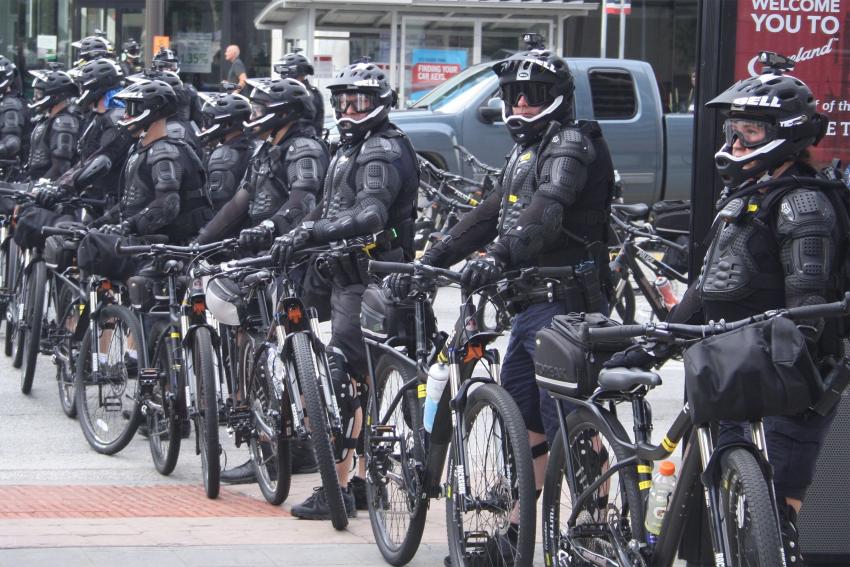Drs. Noakes, Guertin-Martin, and Lee Conduct Research at RNC, DNC This Summer

Bike police in Cleveland, OH at the Republican National Convention. Photo credit: Bob Edwards.
Dr. John Noakes, associate professor and chair of the Sociology, Anthropology, and Criminal Justice Department, along with Assistant Professors of Criminal Justice Dr. Favian Guertin-Martin and Dr. Anne M. Lee, joined a team of student and faculty researchers from Western Washington University, East Carolina University, and the University of Wisconsin-La Crosse to observe political protests and police response at the 2016 Republican National Convention in Cleveland, Ohio, and the Democratic National Convention in Philadelphia.
In addition to seven student researchers from Western Washington, the team also included Saurav Upadhyay, a graduate student in Arcadia’s International Peace and Conflict Resolution program who expressed interest in the research topic in Dr. Noakes’ Social Movements course last semester.
The data, collected through observation of public events, will expand the lead researchers’ ongoing study of law enforcement at political protests. Paying close attention to the ways in which police controlled the protesters’ space, the team documented the use of police bicycles as mobile barriers, handheld cameras for surveillance, and tickets to reduce arrests.
Overall, the researchers recorded an overwhelming number of officers responding to small protests in Cleveland, and less police action—but more significant protests—in Philadelphia. By observing several days of protests as opposed to one event, the researchers could note which strategies developed or changed over time.
“The conventions provide a concentrated period of time to do a lot of fieldwork,” said Dr. Noakes. “You know there’s going to be protests, you know there’s going to be police. You have two different cities, two different police departments, two different contexts. It has built-in comparative possibilities.”
Throughout the upcoming semester, Dr. Noakes will interview police officials from Cleveland and Philadelphia to gain their perspective on the tactics employed by police. When the data collection is finished, the researchers hope to publish their work—including a reflection on police response in both cities, as well as a comparison of policing in Philadelphia during the Republican Convention in 2000 and the Democratic Convention in 2016—in academic journals.
“I imagine a half dozen publications coming out of this before we’re done,” said Dr. Noakes. “We had so many people collecting so much data, and [we’re already] coming up with ideas that will be interesting and effective.”


